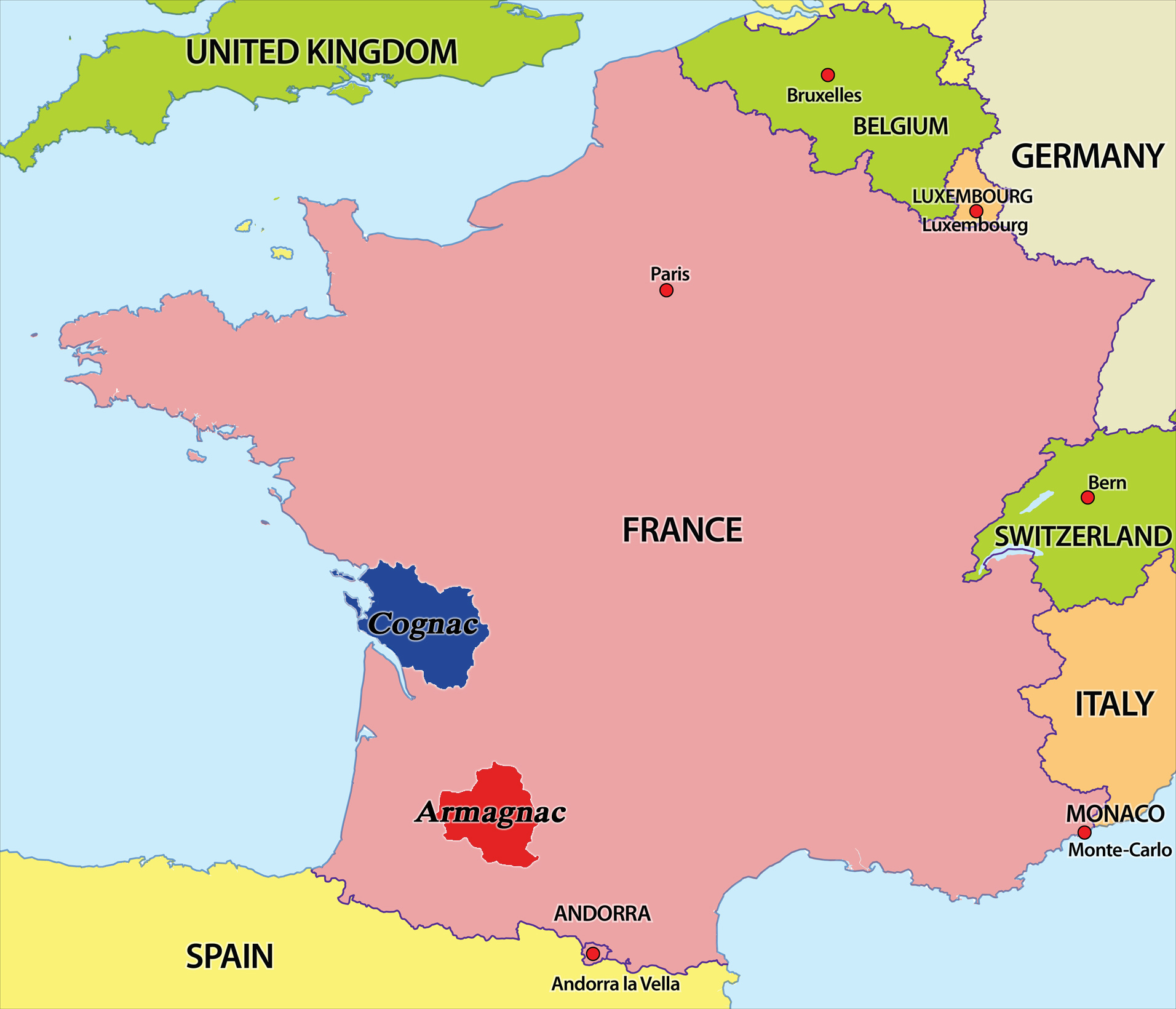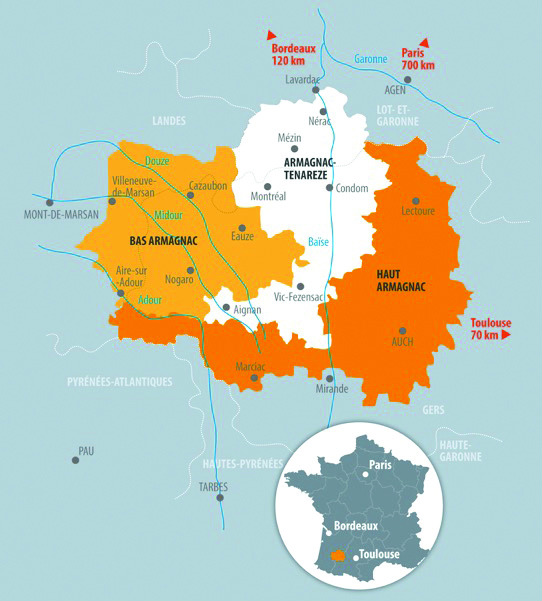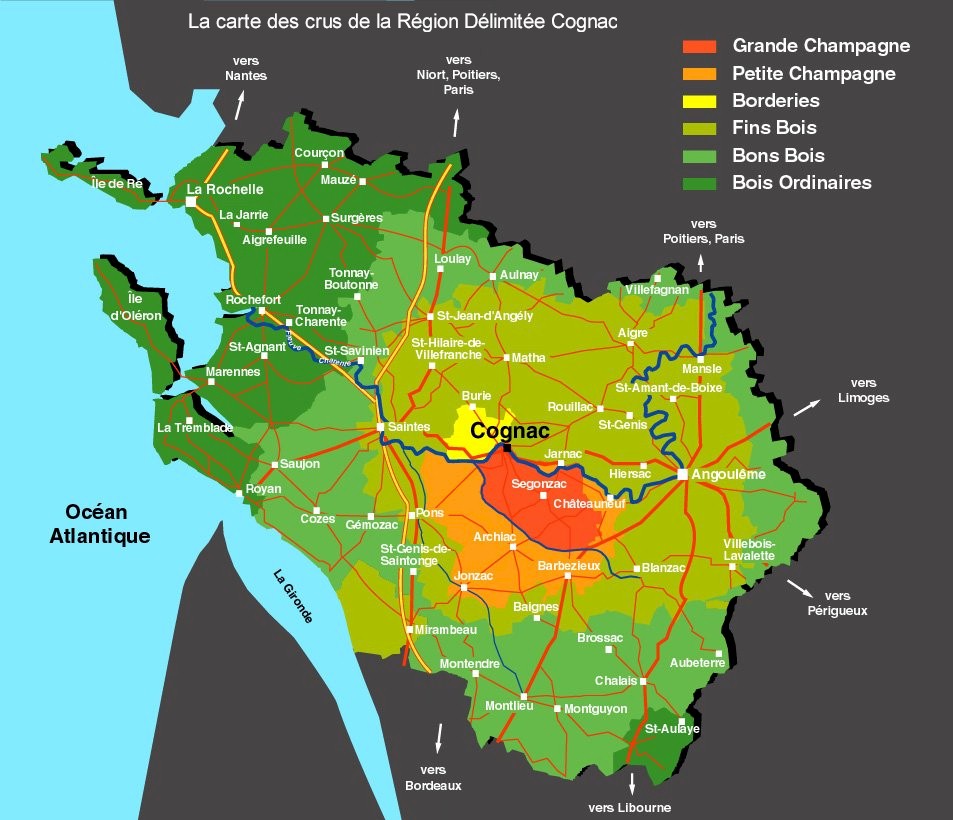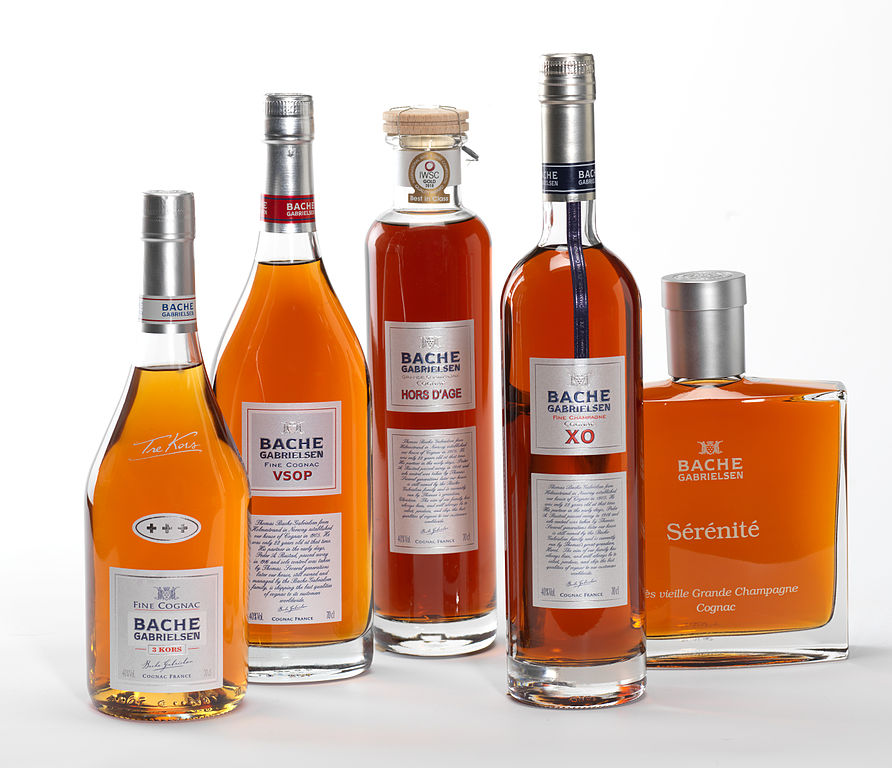Armagnac vs Cognac
Posted 2 July 2019
by Jamie Ashcroft
Brandy is a general term used to refer to any kind of distilled spirit made with fermented fruit juice. This means countries all over the world can produce apple, pear, or other fruit brandies, but the French white grape brandies are perhaps the most well-known of them all.
Cognac and Armagnac are both French brandies, with numerous similarities but some key differences too which non-alcohol experts are often unaware of – the most obvious of which is the location of their production; the terroirs of the two brandies are separated by around 300km.

The location of the Cognac and Armagnac regions in France
Armagnac is produced in the region of the same name, in southwest France in the foothills of the Pyrenees. The region contains three zones of growth: Bas-Armagnac, Armagnac-Ténarèze and Haut-Armagnac. The region is smaller than that of Cognac, hence the smaller volumes of Armagnac production.
 The three zones of Armagnac in southern France
The three zones of Armagnac in southern France
Cognac,
on the other hand, is produced further north in the six zones of the Cognac
region (surrounding the town of the same name): Grande Champagne, Petite
Champagne, Borderies, Fins Bois, Bon Bois and Bois Ordinaire. (It should be
pointed out that, confusing as it is, Grande Champagne and Petite Champagne
here are the two oldest zones of the Cognac region and not in the, famous for sparkling
wine, Champagne region, which is found far north-east of Cognac).
 The six zones of the Cognac region, North of Bordeaux
The six zones of the Cognac region, North of Bordeaux
Cognac was originally created by winemakers eager to export white wine to England and the Netherlands, with its proximity to the port of La Rochelle making exports much easier than further south in the Armagnac region. Because of this and the difference in size of regions, Armagnac is much less well-known outside Europe. However, Armagnac boasts its status as the oldest brandy to be distilled in France – according to some historians it dates from the 13th Century. Armagnac’s long history has always been entwined with French heritage and gastronomy, being written about by Cardinal Vital du Four in the 14th Century for its “Forty Virtues”, which included stopping redness, burning and tearing of the eyes, curing hepatitis, gout, cankers and fistula, healing wounds of the skin by application, recalling memories and even preserving youth!
Cognac and Armagnac use many of the same grapes, however whilst Cognac must be 90% Ugni blanc, Folle blanche or Colombard, Armagnac has to be Folle blanche, Colombard or Baco 22A. The overrepresentation of Ugni blanc in Cognac is mainly due to the Phylloxera outbreak of the late 19th Century wiping out vineyards across Europe. Regarding production processes, the two brandies are subjected to different distillation and ageing methods also; Cognac is distilled twice in pot stills to achieve 70% alcohol, Armagnac once in a continuous column still to achieve 52%. The continuous still for Armagnac was patented in 1818 and has been improved over time by distillers since that date. After distilling, the alcohol is aged in oak barrels – Cognac in Limousine or Tronçais oak, and Armagnac often in Limousine today although local black oak used to be their staple. Ages on the bottle are generally referring to the youngest of the blended vintages, but Armagnacs can be sold under single vintages too. If the wine is a blend, it will have one of four or five age references: VS or *** (Very Special or Three Stars) is the youngest designation, aged for a minimum of 2-3 years, VSOP or VO (Very Special Old Pale or Very Old) 3-4 years and XO (Extra Old), Napoleon or Hors d’âge between 6-10 years. XXO (Extra Extra Old) was added as a new quality of Cognac in 2018, and must be aged for a minimum of 14 years.
 Cognac bottles showing the various age designations
Cognac bottles showing the various age designations
These various differences add up to entirely separate products; while Cognac must be at least 40% ABV, Armagnac is usually between 46-48% and is given more complex and robust flavours throughout the distilling and ageing processes, as well as a softer taste.
Armagnac is generally not diluted with water or added with flavour enhancers like many other brandies can be. If you are interested and willing to try the lesser known of these two giants, a tasting ‘trick’ is to dab your finger in the glass, then to the back of your hand. Once the liquid has evaporated, give it a smell; you should find aromas of dried fruit like apricots and possibly even butterscotch or liquorice.